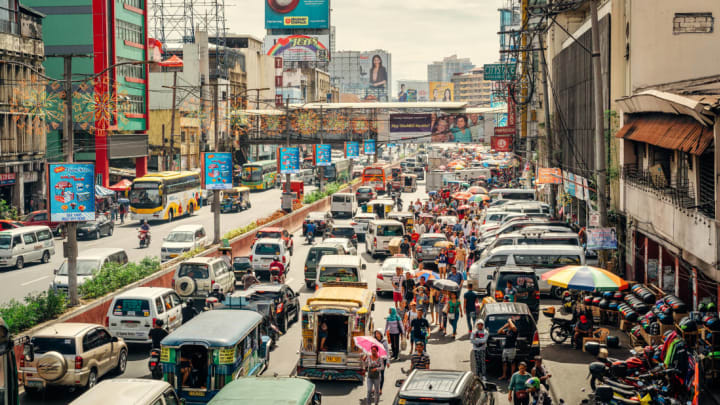The Philippines Is Spending $14 Billion to Build a 'Pollution-Free' City Near Manila
By Emily Petsko

Manila has an air pollution problem. The capital of the Philippines, home to 1.8 million people, has been called one of the worst cities in the world for traffic jams—and its reliance on cars has only exacerbated the problem.
So the country decided to start from scratch and create its own utopia. As Business Insider reports, the country plans to spend $14 billion to build a new, “pollution-free” city. Dubbed New Clark City, this “twin city” to Manila will be located about 75 miles away from the capital. The hope is that 2 million city dwellers will be persuaded to pick up and move there, which would also help ease congestion in Manila.
New Clark will reportedly be built over a 30-year period, and when it's done it will be larger than Manhattan. It will be divided into five districts designed to serve different purposes: government, recreation, business, education, and agriculture. However, two-thirds of the land will be devoted to parks, farmland, and green space.
The plans also call for innovative technologies to be rolled out in New Clark, including drones, self-driving electric cars, and eco-friendly methods of conserving water and energy. As CNN reports, the city will be situated at a higher elevation than Manila in order to safeguard it from environmental disasters like typhoons and floods.
The project is being developed by BCDA Group, a local government-owned corporation, and Surbana Jurong, a Singaporean government-owned consultancy company. They plan to build a sports complex, government buildings, and housing units for government employees before the Southeast Asian Games kick off in the Philippines in December 2019.
It’s certainly ambitious, but as Business Insider points out, there will likely be challenges. The country “struggles with economic development,” it notes, and similar projects in China have failed and turned into ghost cities instead.
[h/t Business Insider]